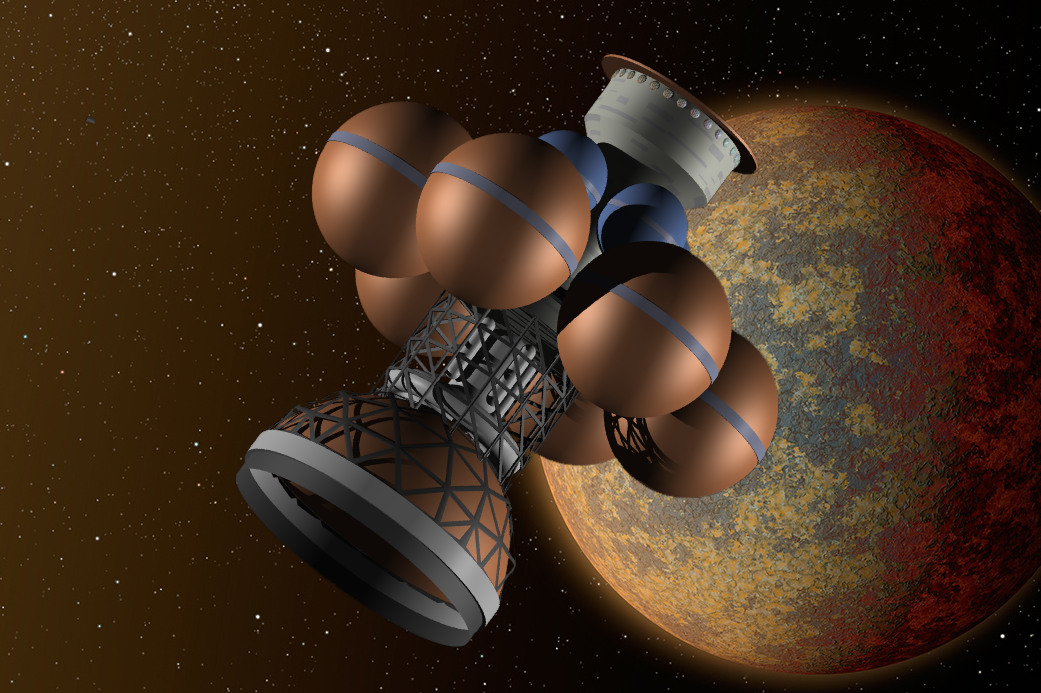|
JBIS
The ''Journal of the British Interplanetary Society'' (''JBIS'') is a monthly peer-reviewed scientific journal that was established in 1934. The journal covers research on astronautics and space science and technology, including spacecraft design, nozzle theory, launch vehicle design, mission architecture, space stations, lunar exploration, spacecraft propulsion, robotic and manned exploration of the solar system, interstellar travel, interstellar communications, extraterrestrial intelligence, philosophy, and cosmology. It is published monthly by the British Interplanetary Society. History The journal was established in 1934 when the British Interplanetary Society was founded. The inaugural editorial stated: ''The ultimate aim of the society, of course, is the conquest of space and thence interplanetary travel.....(the) immediate task is the stimulation of public interest in the subject of interplanetary travel and the dissemination of knowledge concerning the true nature of the d ... [...More Info...] [...Related Items...] OR: [Wikipedia] [Google] [Baidu] |
Interstellar Travel
Interstellar travel is the hypothetical travel of spacecraft from one star system, solitary star, or planetary system to another. Interstellar travel is expected to prove much more difficult than interplanetary spaceflight due to the vast difference in the scale of the involved distances. Whereas the distance between any two planets in the Solar System is less than 30 astronomical units (AU), stars are typically separated by hundreds of thousands of AU, causing these distances to typically be expressed instead in light-years. Because of the vastness of these distances, non-generational interstellar travel based on known physics would need to occur at a high percentage of the speed of light; even so, travel times would be long, at least decades and perhaps millennia or longer. As of 2022, five uncrewed spacecraft, all launched and operated by the United States, have achieved the escape velocity required to leave the Solar System as part of missions to explore parts of the outer s ... [...More Info...] [...Related Items...] OR: [Wikipedia] [Google] [Baidu] |
Project Daedalus
Project Daedalus (named after Daedalus, the Greek mythological designer who crafted wings for human flight) was a study conducted between 1973 and 1978 by the British Interplanetary Society to design a plausible uncrewed interstellar probe.Project Daedalus Study Group: A. Bond et al., ''Project Daedalus – The Final Report on the BIS Starship Study'', JBIS Interstellar Studies, Supplement 1978 Intended mainly as a scientific probe, the design criteria specified that the spacecraft had to use existing or near-future technology and had to be able to reach its destination within a human lifetime. Alan Bond led a team of scientists and engineers who proposed using a fusion rocket to reach Barnard's Star 5.9 light years away. The trip was estimated to take 50 years, but the design was required to be flexible enough that it could be sent to any other target star. Concept Daedalus would be constructed in Earth orbit and have an initial mass of 54,000 tonnes including 50,000 tonne ... [...More Info...] [...Related Items...] OR: [Wikipedia] [Google] [Baidu] |
Interstellar Communication
Interstellar communication is the transmission of signals between planetary systems. Sending interstellar messages is potentially much easier than interstellar travel, being possible with technologies and equipment which are currently available. However, the distances from Earth to other potentially inhabited systems introduce prohibitive delays, assuming the limitations of the speed of light. Even an immediate reply to radio communications sent to stars tens of thousands of light-years away would take many human generations to arrive. Radio The SETI project has for the past several decades been conducting a search for signals being transmitted by extraterrestrial life located outside the Solar System, primarily in the radio frequencies of the electromagnetic spectrum. Special attention has been given to the Water Hole, the frequency of one of neutral hydrogen's absorption lines, due to the low background noise at this frequency and its symbolic association with the basis for what ... [...More Info...] [...Related Items...] OR: [Wikipedia] [Google] [Baidu] |
Space Flight
Spaceflight (or space flight) is an application of astronautics to fly spacecraft into or through outer space, either with or without humans on board. Most spaceflight is uncrewed and conducted mainly with spacecraft such as satellites in orbit around Earth, but also includes space probes for flights beyond Earth orbit. Such spaceflight operates either by telerobotic or autonomous control. The more complex human spaceflight has been pursued soon after the first orbital satellites and has reached the Moon and permanent human presence in space around Earth, particularly with the use of space stations. Human spaceflight programs include the Soyuz, Shenzhou, the past Apollo Moon landing and the Space Shuttle programs, with currently the International Space Station as the main destination of human spaceflight missions while China's Tiangong Space Station is under construction. Spaceflight is used for placing in Earth's orbit communications satellites, reconnaissance satellites ... [...More Info...] [...Related Items...] OR: [Wikipedia] [Google] [Baidu] |
Planetary Engineering
Planetary engineering is the development and application of technology for the purpose of influencing the environment of a planet. Planetary engineering encompasses a variety of methods such as terraforming, seeding, and geoengineering. Widely discussed in the scientific community, terraforming refers to the alteration of other planets to create a habitable environment for terrestrial life. Seeding refers to the introduction of life from Earth to habitable planets. Geoengineering refers to the engineering of a planet's climate, and has already been applied on Earth. Each of these methods are composed of varying approaches and possess differing levels of feasibility and ethical concern. Terraforming Terraforming is the process of modifying the atmosphere, temperature, surface topography or ecology Ecology () is the study of the relationships between living organisms, including humans, and their physical environment. Ecology considers organisms at the individual, ... [...More Info...] [...Related Items...] OR: [Wikipedia] [Google] [Baidu] |
Mark Hempsell
Mark Hempsell is a British aerospace engineer and CEO of Hempsell Astronautics Ltd. which is currently designing the Universal Space Interface Standard (USIS), a system which aims to standardise berthing, docking and attachment of satellites and other spacecraft. Hempsell formerly worked at Reaction Engines Limited, where he was a member of the board of directors as the Future Programmes Director. He has a BSc in Physics from Imperial College London and a Masters in Astronomy and Astronautics from Hatfield Polytechnic, now the University of Hertfordshire. As a Business Development Manager he ran infrastructure studies on launch systems (BAe HOTOL, MacDonnell Douglas Delta Clipper), European space stations and the BAe Multirole Capsule. He was the president of the British Interplanetary Society from 1997 to 2000 and from 2015 to 2018, and was editor of the JBIS periodical from 2005-2009. A Sumerian Observation of the Köfels' Impact Event Hempsell got public audience as auth ... [...More Info...] [...Related Items...] OR: [Wikipedia] [Google] [Baidu] |
Spacecraft Propulsion
Spacecraft propulsion is any method used to accelerate spacecraft and artificial satellites. In-space propulsion exclusively deals with propulsion systems used in the vacuum of space and should not be confused with space launch or atmospheric entry. Several methods of pragmatic spacecraft propulsion have been developed each having its own drawbacks and advantages. Most satellites have simple reliable chemical thrusters (often monopropellant rockets) or resistojet rockets for orbital station-keeping and some use momentum wheels for attitude control. Soviet bloc satellites have used electric propulsion for decades, and newer Western geo-orbiting spacecraft are starting to use them for north–south station-keeping and orbit raising. Interplanetary vehicles mostly use chemical rockets as well, although a few have used ion thrusters and Hall-effect thrusters (two different types of electric propulsion) to great success. Hypothetical in-space propulsion technologies descr ... [...More Info...] [...Related Items...] OR: [Wikipedia] [Google] [Baidu] |
Pamphlet
A pamphlet is an unbound book (that is, without a hard cover or binding). Pamphlets may consist of a single sheet of paper that is printed on both sides and folded in half, in thirds, or in fourths, called a ''leaflet'' or it may consist of a few pages that are folded in half and saddle stapled at the crease to make a simple book. For the "International Standardization of Statistics Relating to Book Production and Periodicals", UNESCO defines a pamphlet as "a non- periodical printed publication of at least 5 but not more than 48 pages, exclusive of the cover pages, published in a particular country and made available to the public" and a book as "a non-periodical printed publication of at least 49 pages, exclusive of the cover pages". The UNESCO definitions are, however, only meant to be used for the particular purpose of drawing up their book production statistics. Etymology The word ''pamphlet'' for a small work (''opuscule'') issued by itself without covers came into Middl ... [...More Info...] [...Related Items...] OR: [Wikipedia] [Google] [Baidu] |
Monthly Journals , sometimes known as "monthly"
{{disambiguation ...
Monthly usually refers to the scheduling of something every month. It may also refer to: * '' The Monthly'' * '' Monthly Magazine'' * '' Monthly Review'' * '' PQ Monthly'' * '' Home Monthly'' * '' Trader Monthly'' * '' Overland Monthly'' * Menstruation Menstruation (also known as a period, among other colloquial terms) is the regular discharge of blood and mucosal tissue from the inner lining of the uterus through the vagina. The menstrual cycle is characterized by the rise and fall of ... [...More Info...] [...Related Items...] OR: [Wikipedia] [Google] [Baidu] |
Publications Established In 1934
To publish is to make content available to the general public.Berne Convention, article 3(3) URL last accessed 2010-05-10.Universal Copyright Convention, Geneva text (1952), article VI . URL last accessed 2010-05-10. While specific use of the term may vary among countries, it is usually applied to text, images, or other content, including paper ( |
Space Science Journals
Space is the boundless three-dimensional extent in which objects and events have relative position and direction. In classical physics, physical space is often conceived in three linear dimensions, although modern physicists usually consider it, with time, to be part of a boundless four-dimensional continuum known as spacetime. The concept of space is considered to be of fundamental importance to an understanding of the physical universe. However, disagreement continues between philosophers over whether it is itself an entity, a relationship between entities, or part of a conceptual framework. Debates concerning the nature, essence and the mode of existence of space date back to antiquity; namely, to treatises like the '' Timaeus'' of Plato, or Socrates in his reflections on what the Greeks called '' khôra'' (i.e. "space"), or in the '' Physics'' of Aristotle (Book IV, Delta) in the definition of ''topos'' (i.e. place), or in the later "geometrical conception of ... [...More Info...] [...Related Items...] OR: [Wikipedia] [Google] [Baidu] |








